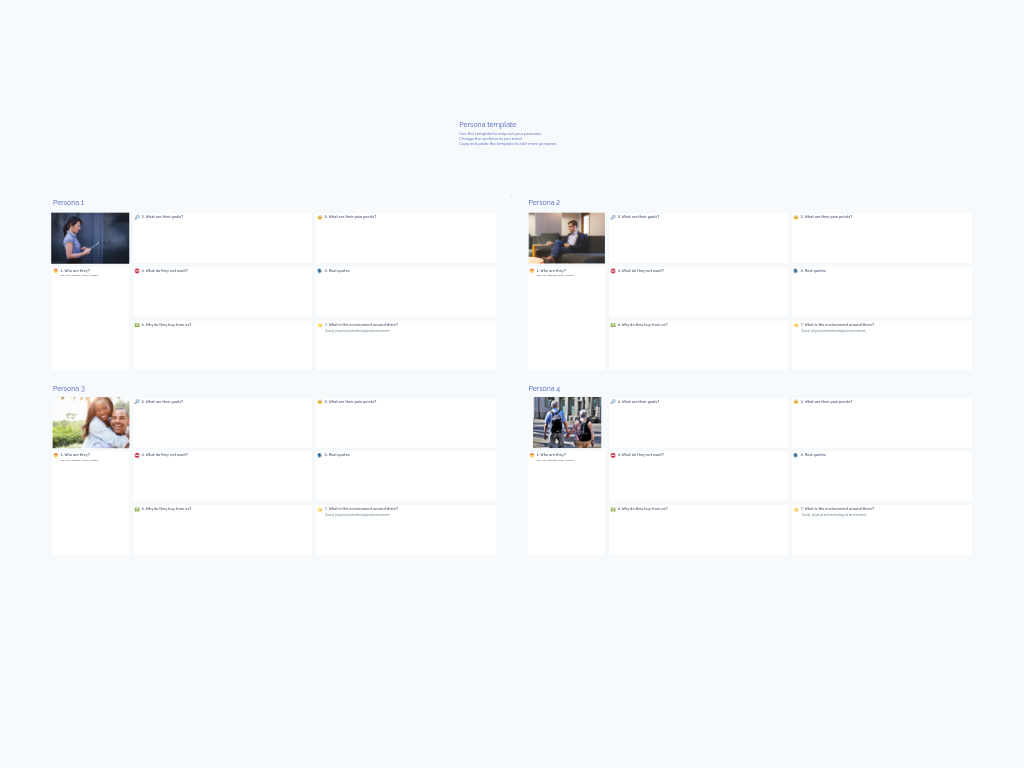Opportunity Solution Tree
The Opportunity Solution Tree (OST) is a structured visualization framework that helps product teams connect customer needs to potential solutions and business outcomes. This template provides a clear path from discovering customer pain points to designing experiments that validate your product decisions, ensuring your team stays focused on delivering real value.
What Is an Opportunity Solution Tree?
An Opportunity Solution Tree is a strategic product discovery tool developed by Teresa Torres that visually maps the relationship between business outcomes, customer opportunities, potential solutions, and experiments. This hierarchical framework helps product teams organize their discovery findings and make informed decisions about which solutions to pursue.
The tree structure consists of four key layers:
- Outcome (Top Level): The specific business outcome your team aims to achieve
- Opportunities (Second Level): Customer needs, pain points, and desires discovered through research
- Solutions (Third Level): Potential product features or services that address the identified opportunities
- Experiments (Bottom Level): Tests designed to validate assumptions about your solutions
Benefits & When to Use
An Opportunity Solution Tree is particularly valuable when:
- Your team has multiple potential directions and needs clarity on which to prioritize
- You're struggling to connect customer research to actionable product decisions
- You want to ensure your solutions directly address validated customer needs
- You need to align stakeholders around evidence-based product decisions
Benefits include:
- Provides a visual representation of your discovery work that the entire team can reference
- Prevents solution bias by forcing connection between solutions and customer opportunities
- Creates a shared language and structure for product discovery discussions
- Helps teams avoid pursuing solutions that don't connect to business outcomes
- Promotes continuous discovery through experiment planning
Prerequisites for Using an Opportunity Solution Tree
Before using this template, ensure you have:
- A clear definition of your target customer and your intended value proposition
- A well-defined business outcome you're trying to achieve
- Conducted at least 3 customer interviews to identify genuine opportunities
How to Run an Opportunity Solution Tree Session
Define Your Business Outcome (15 minutes)
- Place your specific, measurable business outcome at the top of the tree
- Ensure the outcome is focused on business value (e.g., increase conversion rate by 20%)
- This becomes the "trunk" that everything else connects to
Map Customer Opportunities (30 minutes)
- Add sticky notes for each customer need, pain point, or desire identified through research
- Place these in the second level of the tree
- Focus on describing the opportunity from the customer's perspective, not your solution
- Group related opportunities if needed
Brainstorm Potential Solutions (30 minutes)
- For each opportunity, identify multiple potential solutions
- Connect solutions to their respective opportunities with lines
- Remember that good solutions directly address the customer opportunities
Design Validation Experiments (30 minutes)
- For each promising solution, create experiment plans
- Define what you need to learn and how you'll test it
- Focus on validating the riskiest assumptions first
- Connect experiments to their corresponding solutions
Prioritize and Plan Next Steps (15 minutes)
- Identify which experiments to run first based on risk and potential impact
- Assign owners and timelines to priority experiments
- Agree on a cadence to update the tree with new findings
Tips for a Successful Opportunity Solution Tree Session
- Start with real customer data: The OST is most valuable when based on actual customer interviews, not assumptions.
- Keep it focused: If your tree becomes unwieldy, consider creating separate trees for different outcomes or customer segments.
- Make it collaborative: Involve cross-functional team members to ensure diverse perspectives.
- Maintain the hierarchy: Always ensure solutions connect to opportunities and opportunities connect to outcomes.
- Revisit and refine: The OST is a living document that should evolve as you learn more from your experiments.
- Don't skip the experiment level: Testing assumptions is critical to effective product discovery.
- Balance breadth and depth: Explore multiple opportunities but be willing to go deep on the most promising ones.
For a comprehensive guide on utilizing Opportunity Solution Trees, we recommend reading Teresa Torres' full guide at producttalk.org.



